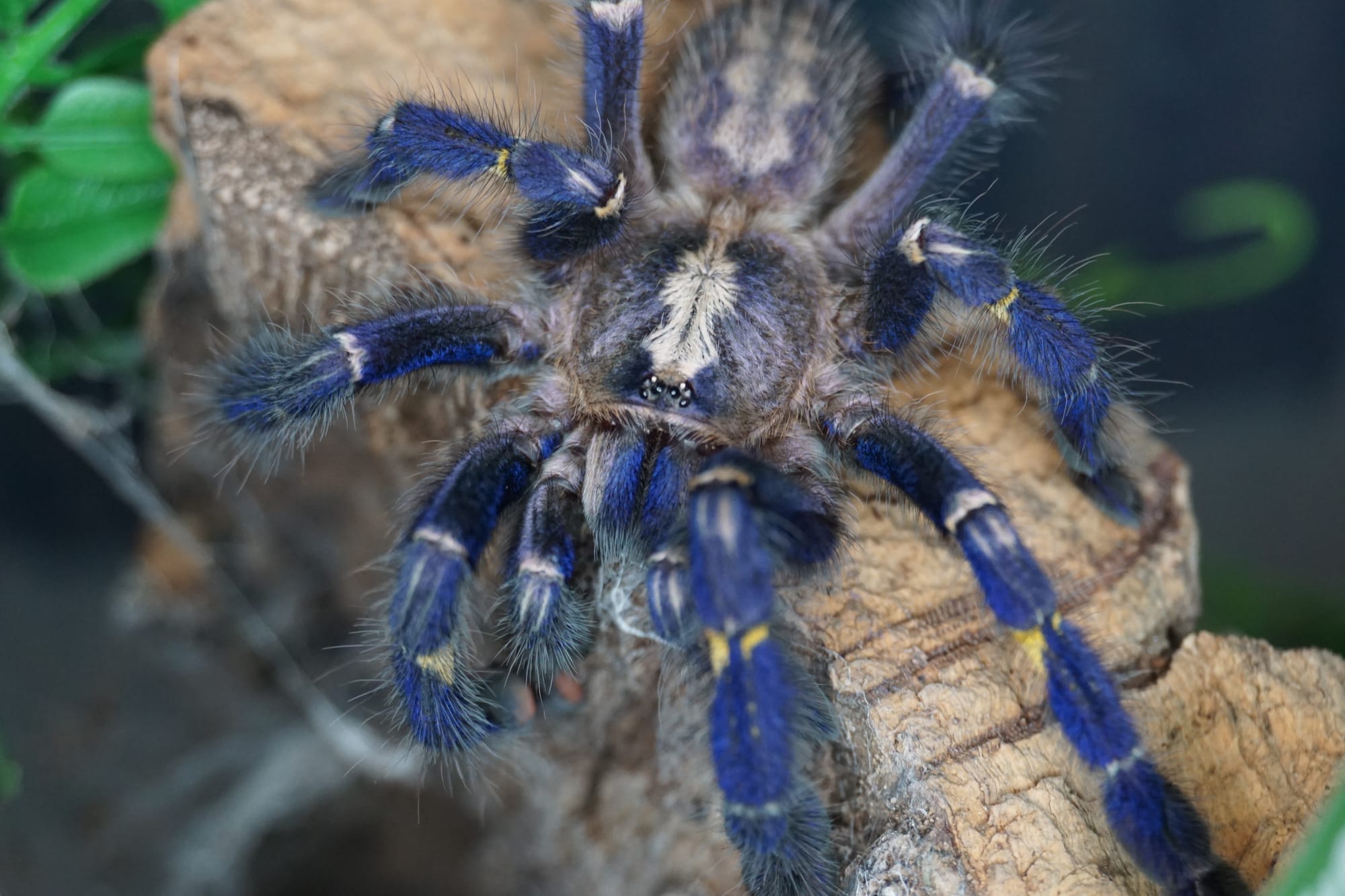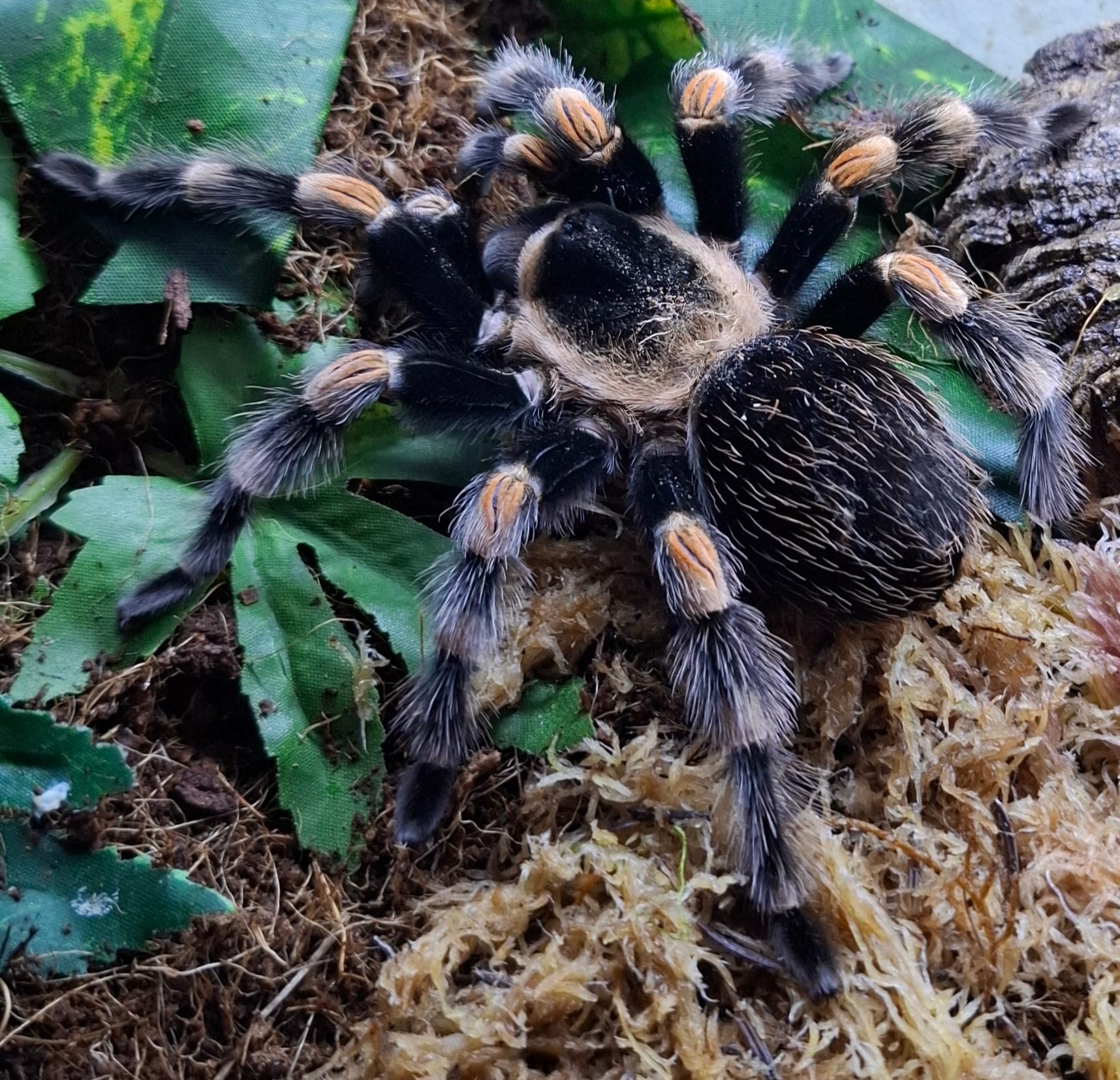Tarantulas as pets
A basic look at tarantulas and their suitability as pets.


Wondering what to get as a pet? Need something that is low maintenance and undemanding? Then you should consider entering the world of tarantula keeping. Tarantulas are fascinating creatures and you will find yourself spending much more time than you thought possible watching them go about their daily lives.
They are not cuddly pets for stroking but that does not make them any less rewarding a pet to have.
As with all animals, every tarantula is an individual, some are more tolerant of handling than others, however the best way to keep these animals is that handling should not be carried out unless absolutely necessary. This is for the safety of yourself as well as the tarantula. Tarantulas will only bite if they feel threatened or unsafe. They may feel unsteady on your hand and use their fangs to steady themselves. Their bites can be extremely painful, sometimes worse than the effects of their venom. A fall from even a small height can result in a tarantula rupturing their abdomen, causing death. For these reasons handling is not recommended.
Tarantulas are split into two generalisations, New world -These are for the most part considered more suitable for beginners.Such as the Brachypelma hamorii (pictured above), these species are from north and south America, tend to have lower level venom, akin to that of a bee sting, they also generally have urticating hairs, as a defence mechanism, these are small barbed hairs that cause irritation and can be quite serious if inhaled or find their way in to the nose and mouth of an unsuspecting keeper. There are some exceptions such as the Genus Psalmopoeus which lack urticating hairs and have much more potent venom akin to that of an old world.
Old world - These are recommended to be kept only by experienced keepers. Like the beautiful Poecilotheria metallica (pictured above) which hails from India,old world species come from Asia, Africa, Oceania and Europe. They tend to have much more potent venom than new world species, though there are some exceptions, a bite can cause nausea, headaches, a burning feeling in the bite site, swelling and nerve pain that can last for quite a long time. Due to this, old world species are not considered suitable for beginners.
As with all animals, the main importance is to treat each animal as an individual and with respect, even species that are considered generally docile can be intolerant of handling and or attention of any kind.
Before getting any tarantula, we recommend you spend some time researching them as you should with any potential pet.
When getting your tarantula the most important thing is to ensure its enclosure is correctly set up, fossorial/burrowing tarantulas need plenty of substrate to dig down in to,suitable hides and access to clean drinking water at all times. Arboreal species should be kept with enough vertical space and plenty of cross ventilation to allow higher humidity but without the air going stagnant, cork bark tubes and flats arranged vertically with fake or real plants will provide plenty of hiding spaces, again clean drinking water should be available at all times.
Size suitable prey items should be provided such as crickets, locust, mealworms and cockroaches. Usually you would feed spiderlings every 3-4 days, juveniles once a week, sub adults and adults once every 10 days to 2 weeks though don’t be surprised if your tarantula goes through periods of fasting for extended periods of time, some adult tarantulas can go for over a year between feeds, in this case all you can do is keep offering prey items every 2 weeks and in all cases of feeding remove any uneaten prey 24 hours later as some may actually cause a tarantula harm.
Tarantulas are invertebrates meaning they don't have a skeleton like we do, tarantulas actually have an outer shell that they must shed away to grow, this process is called moulting, there are a few signs that your tarantula is in premoult, they may go off their food, their abdomen will go dark in some cases almost black and they may go in to their hiding spot/ burrow and close up the entrance, when this happens you should not feed your tarantula, ensure that they always have clean available water and give them peace as moulting can be a stressful process. After the tarantula has successfully moulted they should not be fed until their exoskeleton hardens, for spiderlings about 4 days to a week, juveniles a week to 10 days, sub adults and adults 2-3 weeks. A good visual indicator is that the fangs are totally black.
When dealing with your tarantula it is advisable to have 2 things on hand, a long handled paint brush to persuade your tarantula in which direction to go and a "catch cup" usually a two litre pop bottle cut in half is handy for this as the cap is removable which is a great to access so you can persuade the spider out of the "catch cup" when you are done. The most important thing is to stay calm and concentrate on the task in hand as this ensures your own and your tarantulas safety, should it bolt and run away, stay relaxed and gently coax it into your catch cup, panicking will only lead to injury to yourself or the spider.
In conclusion tarantulas are a fantastic pet for someone who doesn't have the space for a larger animal or the time to spend engaging with an animal that requires attention. Their maintenance is low and as long as their requirements are seen to they are happy to go about their daily business with little input from yourself.
We currently have some beautiful tarantulas for rehoming, please contact the centre for more information.

